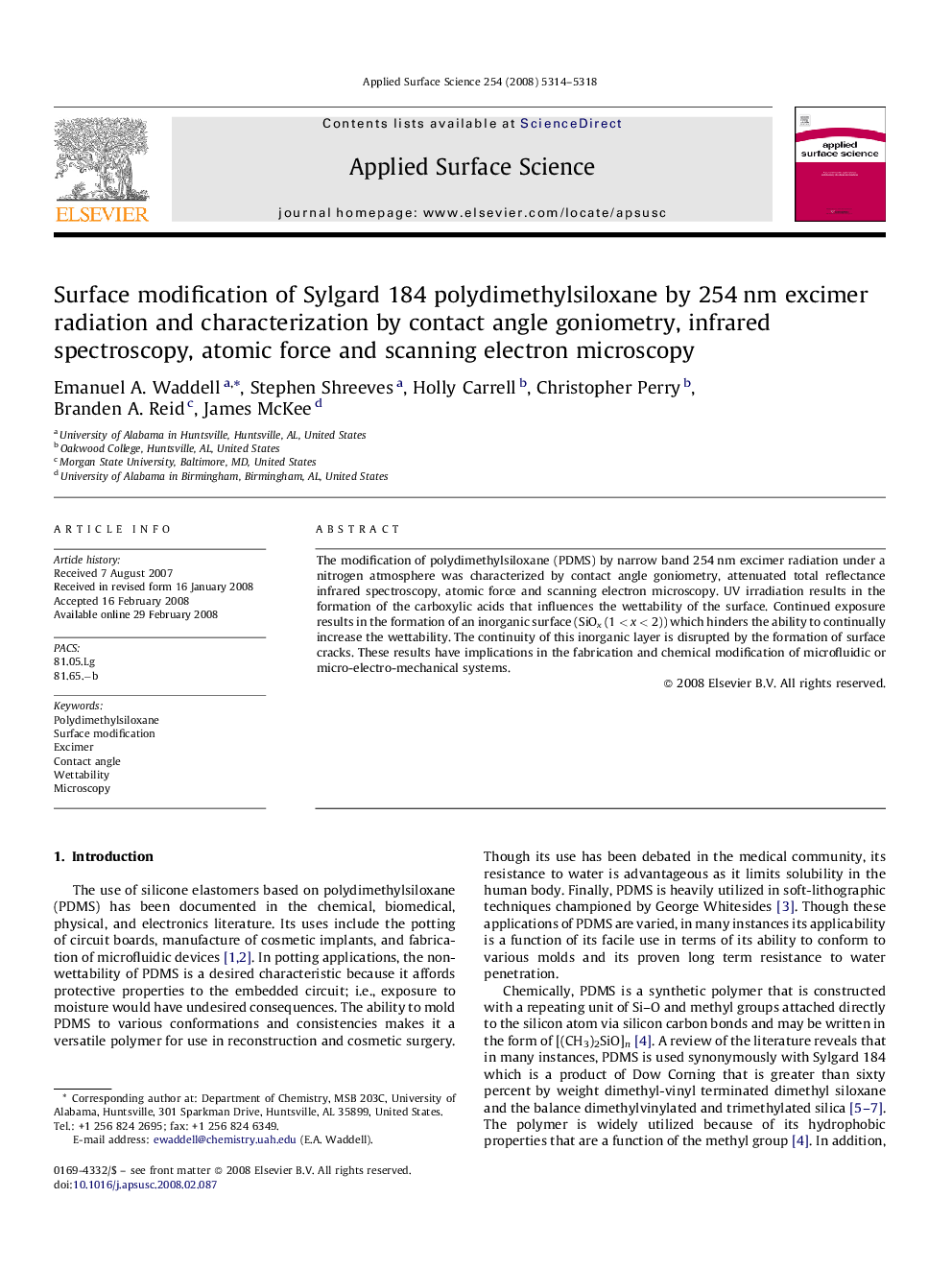| Article ID | Journal | Published Year | Pages | File Type |
|---|---|---|---|---|
| 5369418 | Applied Surface Science | 2008 | 5 Pages |
Abstract
The modification of polydimethylsiloxane (PDMS) by narrow band 254 nm excimer radiation under a nitrogen atmosphere was characterized by contact angle goniometry, attenuated total reflectance infrared spectroscopy, atomic force and scanning electron microscopy. UV irradiation results in the formation of the carboxylic acids that influences the wettability of the surface. Continued exposure results in the formation of an inorganic surface (SiOx (1 < x < 2)) which hinders the ability to continually increase the wettability. The continuity of this inorganic layer is disrupted by the formation of surface cracks. These results have implications in the fabrication and chemical modification of microfluidic or micro-electro-mechanical systems.
Keywords
Related Topics
Physical Sciences and Engineering
Chemistry
Physical and Theoretical Chemistry
Authors
Emanuel A. Waddell, Stephen Shreeves, Holly Carrell, Christopher Perry, Branden A. Reid, James McKee,
